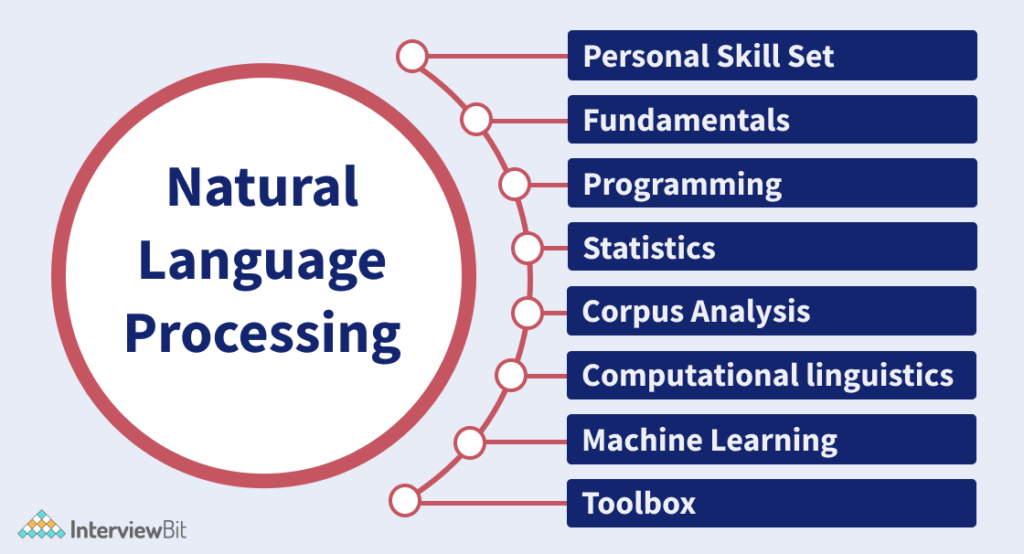Natural Language Processing 24
Natural Language Processing
At the nexus of computer science, artificial intelligence, and linguistics lies the field of natural language processing, or NLP. It aims to provide machines with the capacity to meaningfully and practically comprehend, interpret, and produce human language. Voice-activated assistants, chatbots, and language translation services are just a few of the everyday applications that rely on this technology.

Numerous activities fall under the broad category of natural language processing (NLP), such as text summarization, sentiment analysis, machine translation, and speech recognition. The intention is to close the knowledge gap between computers and humans so that the latter can comprehend and react correctly to vast amounts of natural language input. NLP techniques combine machine learning algorithms and rule-based methods; recent developments have placed a strong emphasis on deep learning and neural networks.
The use of natural language processing (NLP) to extract insights and automate processes is becoming increasingly important as the amount of unstructured data increases. From automating customer service to personalizing content, it is essential to improving accessibility and the user experience in technology. NLP has the potential to completely transform how humans engage with digital systems by improving their intuitiveness and responsiveness to human requirements through continued research and development.
What is Natural Language Processing (NLP)?
Within the study of artificial intelligence (AI), Natural language Processing (NLP) is a subfield that focuses on natural language interaction between computers and people. It entails giving computers the ability to meaningfully and practically comprehend, interpret, and produce human language.
How does NLP Work?
Natural language processing (NLP) integrates machine learning, statistical, and deep learning models with computational linguistics, which models human language through rules. The main elements and procedures are summarized as follows:
Text segmentation into discrete words or phrases is known as tokenization.
Part of finding a word’s grammatical category (nouns, verbs, adjectives, etc.) is known as speech tagging.
Recognizing and categorizing named entities in a text, such as individuals, groups, and places, is known as Named Entity Recognition (NER).
Examining the syntax of sentences is known as parsing.
Analyzing the sentiment or emotional undertone of a text is known as sentiment analysis.
Translation of text between languages using machine translation.
Turning spoken words into text is known as speech recognition.
Producing logical and contextually appropriate text is known as text generation.
Follow our Digiknowledge.co.in page for the latest updates about technology, bikes, cars, sports, lifestyle, and many more.
What are the uses of NLP?
Many uses for natural language processing (NLP) exist, such as:
Search engines: recognizing and answering user inquiries to deliver pertinent results.
Voice assistants: These systems enable voice instructions to be understood and responded to by digital assistants such as Siri, Alexa, and Google Assistant.
Chatbots: Facilitating automated communications for customer support and service.
Translation services: providing assistance with language translation using programs like Google Translate.
Social Media Monitoring: Examining opinions and patterns from content on social media.
Content Summarization: Creating automatic summaries of extensive textual content.
Sorting and classifying critical emails as junk is known as email filtering.
Where is NLP most applicable?
NLP is useful in a variety of domains, such as:
Healthcare: Autautomatingperwork, analyzing patient information, and using text analysis to facilitate diagnosis.
Finance: sentiment analysis of market movements, keeping an eye on financial news, and automating customer service.
Education: Creating phisticated tutoring programs, automating grading, and offering individualized instruction.
Improving customer relations with automated chatbots and support systems is known as customer service.
Marketing: targeting advertisements more effectively, comprehending client input, and personalizing content.
What is the Future of NLP?
AI and deep learning developments will propel NLP toward a bright future. Important motifs consist of:
Better models that comprehend the sentiment, context, and nuances of human language translate into increased accuracy.
More advanced models with the capacity to accurately comprehend and produce text in several languages are known as multilingual models.
More organic and human-like interactions between robots and people are possible thanks to conversational AI.
Process linguistic data in real-time applications more quickly and effectively.
Correcting linguistic model biases is a step toward creating impartial and ethical artificial intelligence (AI) systems.
What is the main goal of NLP?
NLP’s primary objective is to make it possible for computers to comprehend, interpret, and produce meaningful and practical human language.
What are some common techniques used in NLP?
Text creation, sentiment analysis, machine translation, speech recognition, tokenization, named entity recognition, parsing, and part-of-speech tagging are examples of common techniques.
How is machine learning used in NLP?
By creating models that can learn from and make predictions based on linguistic data, machine learning helps to increase the precision and productivity of natural language processing (NLP) operations.
What is the role of deep learning in NLP?
NLP systems can now comprehend and produce human language more accurately and contextually thanks to deep learning, particularly when utilizing neural networks.
How does NLP impact everyday technology?
Contextual and user-friendly technologies like chatbots, search engines, virtual assistants, translation services, and social media monitoring tools are all powered by natural language processing (NLP).
What industries benefit the most from NLP?
Applications of NLP are very beneficial to a variety of industries, including marketing, finance, healthcare, and education.
What is the most common problem in natural language processing?
Handling ambiguity in language is one of the biggest problems in natural language processing (NLP). There are frequently several interpretations for words and sentences, and context is crucial in helping one comprehend the correct interpretation. It is still difficult to create models that correctly identify context and separate languages.
Which type of data is used by NLP?
Any type of textual data used to train or assess natural language processing models is referred to as NLP data. It contains consumer reviews, social media posts, speech transcripts, written documents, and more.




